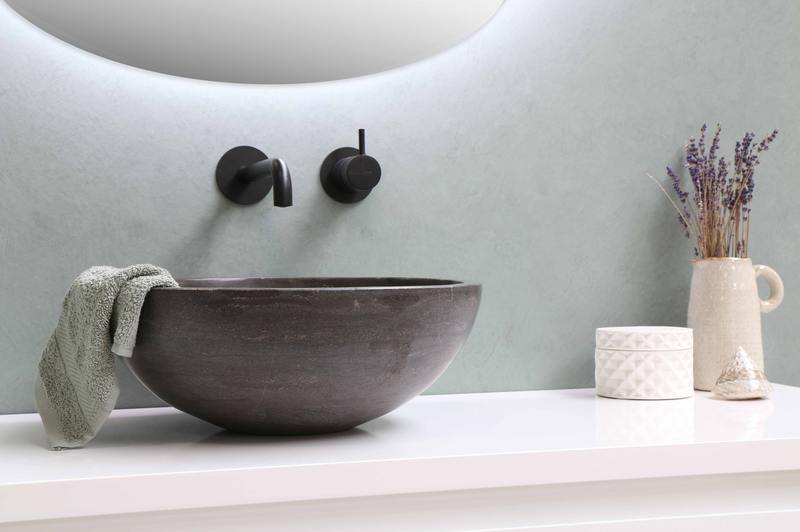If you’re looking for an article on how to replace water damaged sink cabinet, you came to the right side of the internet! We only provide quick and easy steps suitable for everyone. We’ll mention some tips to avoid the same problems on your under sink cabinet.

Questions To Ask Before Replacing A Sink Cabinet
Before you start restoring the water damaged sink cabinet, you’ll need to keep five questions in mind. It’ll help you create an analytical plan to restore the water damaged sink cabinet. Here are the following questions:
- How is it severely damaged?
- Should I keep the original design or create something new?
- Which will be more expensive, replacing or restoring?
- Does its sentimental value outweigh your budget?
- How long will the changes last?
Replacing Water Damaged Sink Cabinet
Step #1. Prepare the workspace
Remove all objects present inside the sink cabinet and move them away from your working area. Look for an old newspaper in front of the cabinet to protect the floor and help you clean up faster. For better vision, you can plug in light under the sink cabinet.
Step #2. Remove the cabinet doors
Remove the sink cabinet door to allow you to have better access to them under the sink. Back out the attached screw from the door hinge to the cabinet. Ensure that you keep track of the number of screws to reuse during the replacing process.
Step #3. Turn off the water supply
Turn off the water supply. You’ll need to use the shutoff valve located on the supply lines under the sink.
Disconnect the drain pipe and water beneath the sink since there’s a possibility that it’ll impede your process. There’s no need for removal for large areas with plumbing that’s running out of the wall.
Step #4. Remove the old cabinet bottom
Pull out the bottom of the cabinet. Punch a hole through the crumbling materials, rot, and enlarge the removal right until the cabinet bottom is gone.
Alternatively, insert a jigsaw or a handsaw that’s a good fit for the sink cabinet and slice it through the floor near the cabinet sides. Pry out the remaining pieces, including the clinging materials inside the side walls.
Step #5. Kill any mold or mildew
Spray out the mildew or mold that is growing inside the sink cabinet under and around. It would be best if you use this list of materials:
- 1 cup bleach mixed with 1 gallon of water
- (1 cup of borax mixed with 1 gallon of hot water)
- Straight vinegar
Apply to the mold or mildew and allow the solution to sit on its surface for about 15 to 20 minutes before lightly scrubbing the area using a soft bristle brush. Right after, follow it up by rinsing it with water and an old cloth. Ensure to rinse it thoroughly for flaws to be removed.
Step #6. Clean the floor
Clean the floor of the under sink even if you’ve treated the molds. Use an old cloth to wipe off or with a small vacuum with an attachment to suck out the dirt.
Step #7. Take your measurements
Measure the interior of the cabinet that you’ll be installing, both length and width. Use the carpenters’ square to mark the ½ inch plywood.
Step #8. Determine the location of the pipes
Ensure to mark the location of the pipes that are present that run through the cabinet. Ensure that you use an old bottom piece as a template for the measurement and cut the plywood accordingly.
An accurate hole gives you a great finished product. If the plumbing runs through the wall, you don’t have to do this step.
Step #9. Install the new cabinet
Slide the new cabinet frame into its proper position beneath the sink. Screw drive the screws used from the old frame through the new set to give support. Then, you’ll need to run beads of silicone caulk right along its edges around any opening to finish up the replacement of your sink cabinet.
How to protect sink cabinets from water damage
Install a leak sensor
This type of detector sits in the sink cabinet that is set in the cabinet. Like smoke detectors, it detects the water leak in the cabinet right away.
Never ignore musty odors
It’s a bad sign of leakage. When the wooden cabinet is wet, it usually doesn’t take long for the mold to accumulate, and the smell’s detectable.
Waterproof around the sink
Check out the sink for any loose caulk and cracks. If there are any, repair the seal as soon as possible.
When there’s a water leak, it can cause severe damage. Be certain to waterproof the area underneath the sink. A bad installation may easily lead to water leaks.
Conclusion
We’re glad to see you at this point of this worthwhile read on how to replace water damaged sink cabinet. Suppose the work’s overwhelming to handle alone. In that case, it’d be best to call for a professional to avoid worse issues with the damaged sink cabinet.
